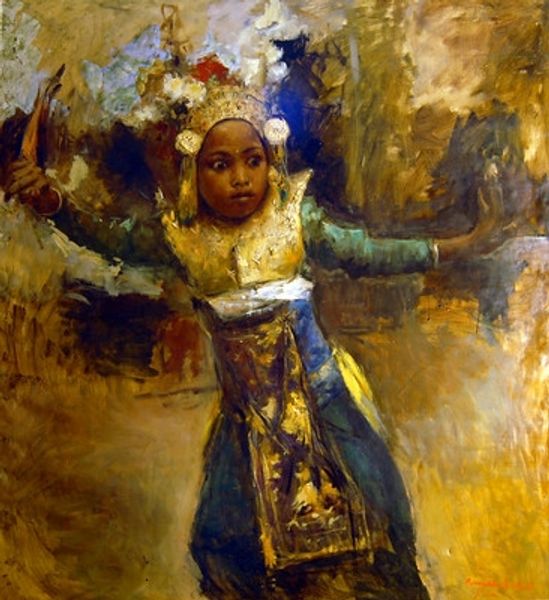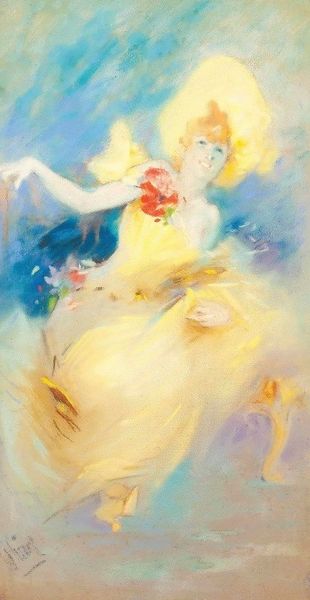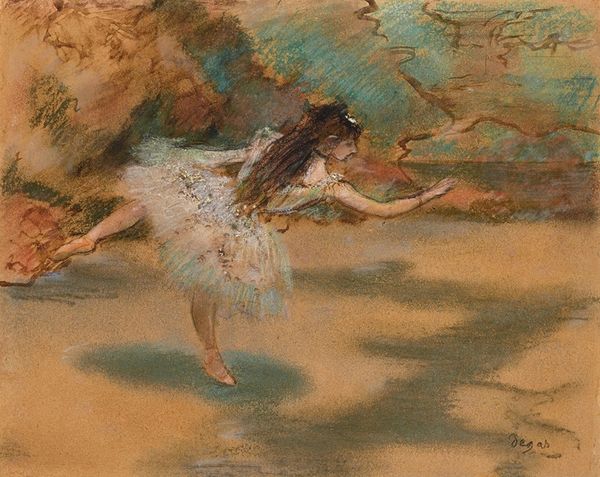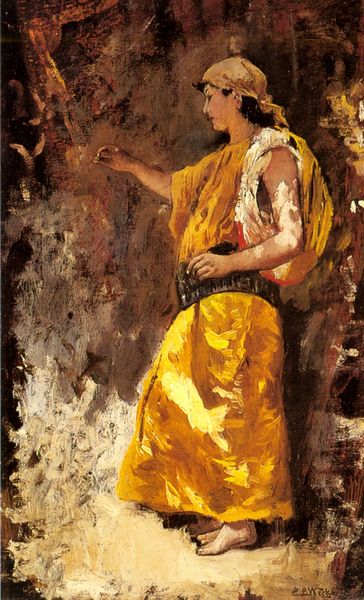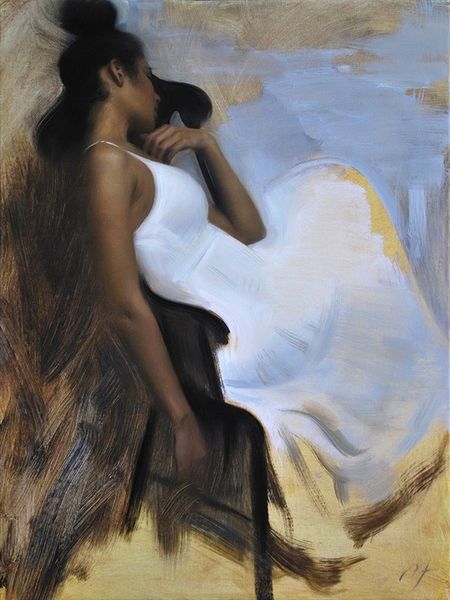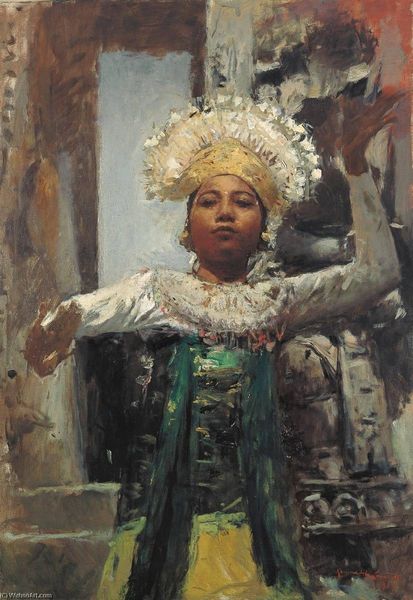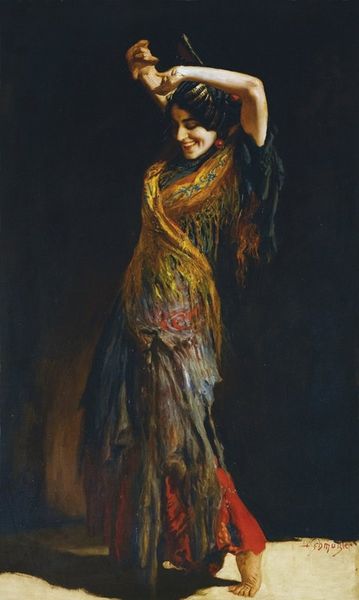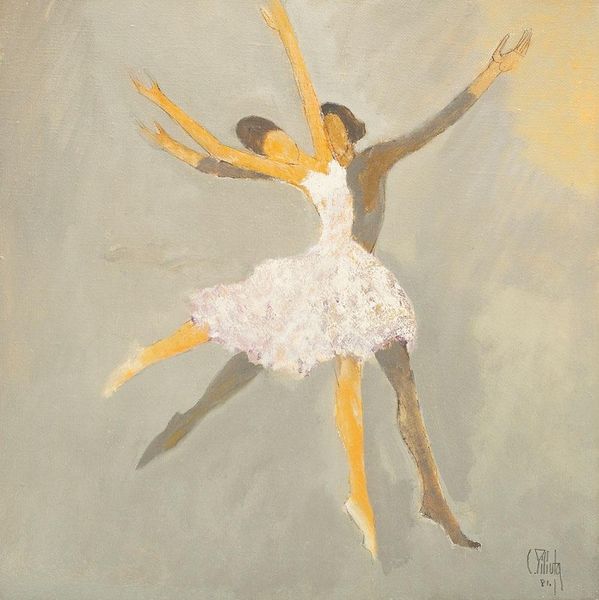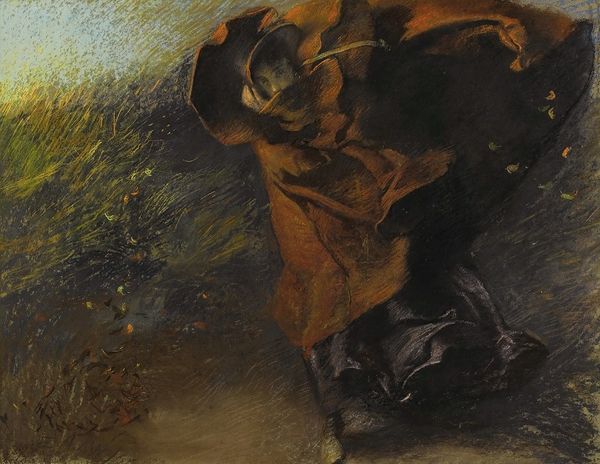
Copyright: Public domain
Curator: Here we see "Javanese Dancer," an oil painting by Romualdo Locatelli from 1939. There’s a real sense of dynamism to it, don’t you think? Editor: Absolutely. The loose brushstrokes and earth-toned palette give it a very raw, immediate feel. Almost as though we’ve stumbled upon this dancer in mid-performance. Curator: Locatelli's choice to depict a dancer speaks to a larger interest in colonial and exoticist themes prominent in early 20th-century European art. It's part of a trend to display faraway lands. What do you gather from the symbolic vocabulary at play here? Editor: The dancer’s outstretched arms and intricate head adornments immediately evoke a sense of ritual and connection to something ancient. It hints at the cultural significance embedded in Javanese dance traditions; a rich tapestry of symbolism, movement, and spiritual storytelling. Curator: The setting is quite minimal, and yet there's a powerful sense of context. It's like we're witnessing a carefully preserved tradition. Her very presence evokes a world far beyond the gallery walls. Editor: Exactly, and the artist’s use of light and shadow draws attention to the dancer's face, which, though young, exudes focus and dignity. It feels like an attempt to capture not just a performance but a whole cultural identity, presented through the individual. The adornments are all pointing to more profound levels. Curator: While it undeniably romanticizes Javanese culture, the painting invites a critical consideration of the power dynamics at play during that colonial period. It makes one wonder if paintings of similar content perpetuated certain orientalist tropes at the time. Editor: Despite those complexities, as a portrait of a Javanese dancer, I see symbols of heritage. A living archive of embodied cultural knowledge, and also one entry point for viewers, then and now, to feel a sense of connection with a wider world. Curator: It's that interplay of documentation and artistic expression that makes this piece so compelling. Editor: Indeed, it has made me consider the relationship between visual representation and living traditions with fresh eyes.
Comments
No comments
Be the first to comment and join the conversation on the ultimate creative platform.
